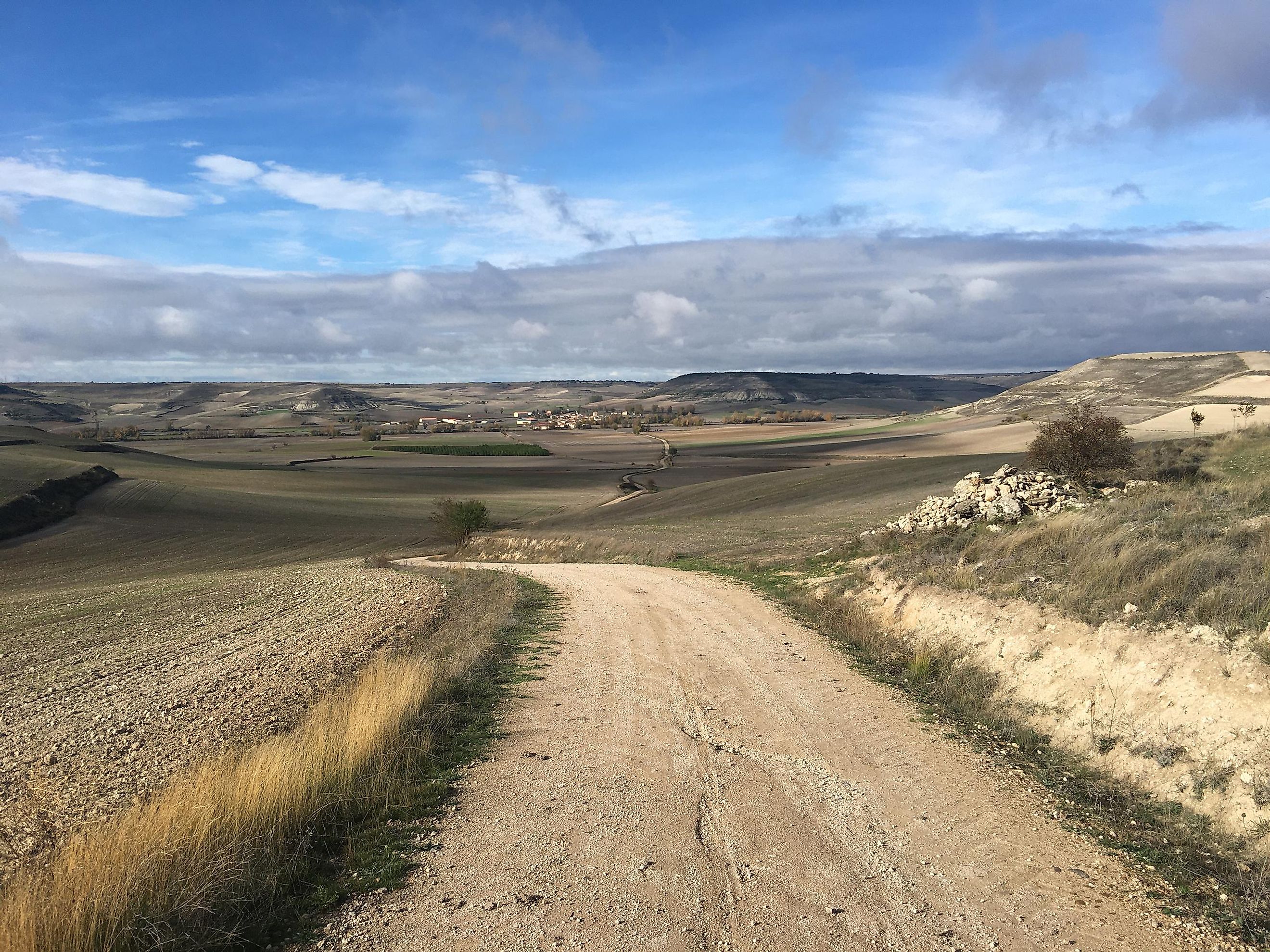
The Camino Francés: The Plateau and the People
The fog lasted all morning – a welcomed veil that reduced the seemingly infinite prairie trails into manageable chunks. Just walk to the next telephone pole, I thought. Just walk to the next crossroads. Eventually there will be a town. Eventually, there will be coffee.
At first glance, the 220-kilometer Meseta Central (i.e. the plateau of the North-Central Iberian Peninsula) that constitutes the middle portion of the Camino Francés is strikingly beautiful. Once the morning clouds give way to the sun's mid-afternoon blast, the sheer enormity, and subtle layering of the landscape begins to register, and is nothing short of arresting. But hour after hour, day after day of monotonous walking in challenging conditions (i.e. hot in the summer, cold in the winter, and always exposed) can have one of two effects on pilgrims. Either it introduces a meditative trance that shines light on what brought you to this medieval pilgrimage well into the 21st century, or the boredom becomes overwhelming. For most, the two scenarios will tend to oscillate.
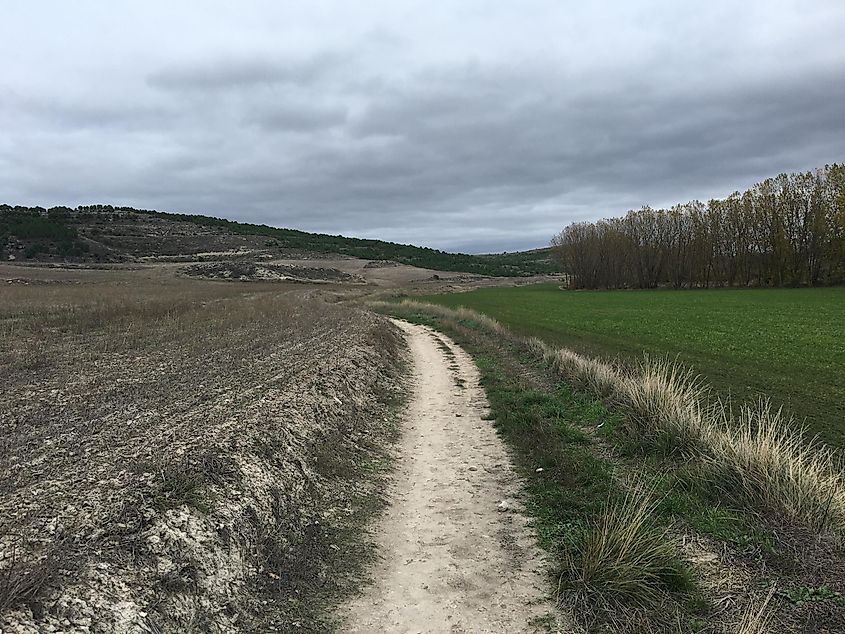
Castilla y León is the largest autonomous community in Spain. It is also one of the country's least densely-populated regions. And while the flat prairies offer pilgrims an opportunity to physically recharge between the mountainous bookends of the Camino Francés, it is taxing in novel ways: namely, mentally and emotionally.
This part of the Camino de Santiago network is tailor-made to reveal the human condition. I have to imagine that modern-day pilgrims struggle with this section more than the pilgrims of yore. Phone addiction alone seems to have tanked our tolerance for understimulation. I know it has done a number on me. So rejoice, prospective pilgrims, at the opportunity to reconnect with the self, spirit, and environment (or beware of the week or so of boredom-induced anxiety between the cities of Burgos and León).
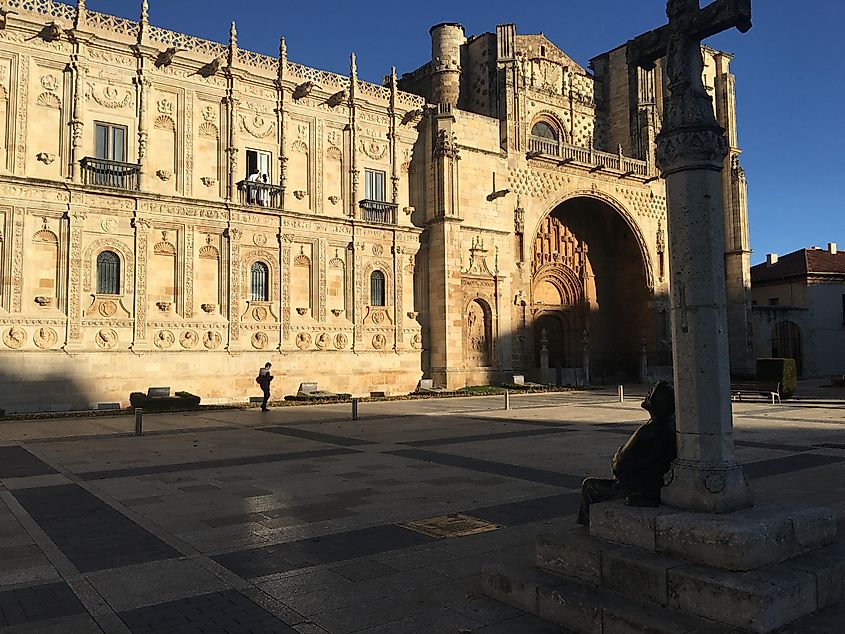
If you are seeking something on the Camino, the meseta presents a valuable opportunity. For this reason, I recommend stowing the headphones as much as possible. Many pilgrims make a habit of putting earbuds in right from the start. I wasn't immune to this myself. I actually decided to leave my headphones behind – partly because I was trying to shave ounces off my pack, but also to override my lack of discipline. This worked until I found a pair of headphones right in the middle of the trail. I put the pedal down and asked the few pilgrims ahead of me if they had lost them, but alas, no one claimed them. I took this as a sign to embrace the middle way (a core concept in Buddhism) and strategically utilize music when I needed a boost (usually in the last third of the day), without relying on it for gratuitous distraction. The Camino speaks. The Camino provides!
The People You Meet Along the Way
Meditation and music aside (or catching up on podcasts/audiobooks), another possibility that Castilla y León presents is getting to know your fellow pilgrims. With upwards of several hours between towns (all of which are anchored around an old cathedral), swapping backstories with strangers is likely to become a hobby. The power of walking, once again reveals itself. The continual motion keeps the brain firing, and looking at the trail, rather than directly into the eyes of your comrade allows for added vulnerability in the discussion. Granted, some folks are seeking solitude, so be mindful of whose ear you grab, but it is usually pretty obvious who is open to conversation. Oftentimes, groups of ragtag individuals will form for days on end, sometimes even the remainder of the Camino. I've seen/heard of lifelong friendships being formed out there, and even romantic relationships.

There are all types of people walking the Camino. A common category is the person in transition. You'll meet a lot of recently unemployed people (for both voluntary and involuntary reasons), and an unfortunate share of broken hearts. Being between relationships or in career limbo is great Camino fodder. Just don't make the mistake of expecting one grand, cinematic moment of clarity/relief to greet you at Santiago de Compostela, or Finisterre, or Muxía (i.e. the common end points). But there is a good chance that over the course of the month, or so (plus the months, and even years that follow the journey), new productive perspectives will emerge from those lengthy reflections.
Read More: The Camino Francés: Lessons From An Off-Season Pilgrimage
Another class of pilgrim is the one looking to recharge. Life is fast-paced, and complicated. The Camino is slow and simple. You get up early, walk all day, find an albergue, eat, shower, go to sleep early, and do it all over again (and again, and again). I met a cop who told me about the seemingly hopeless cycles he deals with in his community, and how he walks different caminos during his three-week vacations in order to keep himself grounded, and sane.
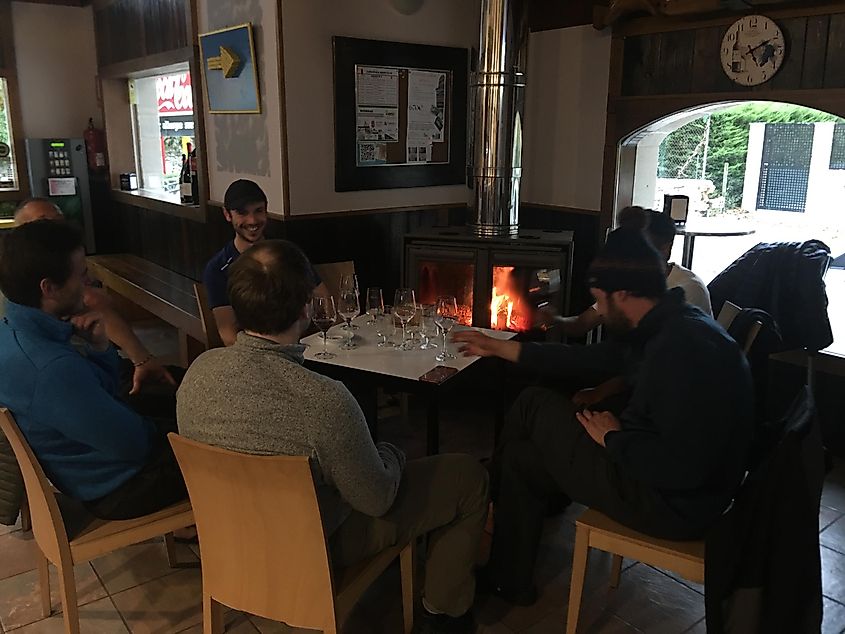
Yet another demographic you're likely to meet is made up of the ones looking to be inspired. The traditional pilgrim still exists, albeit in smaller numbers than the 11th-century heyday. I was fortunate to meet some theistic wanderers. They are there to pray, visit the churches, martyr themselves through the effort, and just generally strengthen their relationship with god. I made an effort to tap into these practices. My religion is a bit ambiguous at the moment, but I embraced the Christian platforms where I could, continued to recite my daily Buddhist precepts and mantras, and also did some freestyle praying as I walked those early morning miles.
Read More: History of the Camino de Santiago
Inspiration, though the word is historically linked to religion, also comes in the form of creativity on the trail. Again, something about steady walking allows the mind to make all sorts of interesting connections. I met a fellow Canadian who wrote a song during the stage to Belorado. I myself wrote a poem that same day. In fact, I wrote a poem more days than not on this pilgrimage.
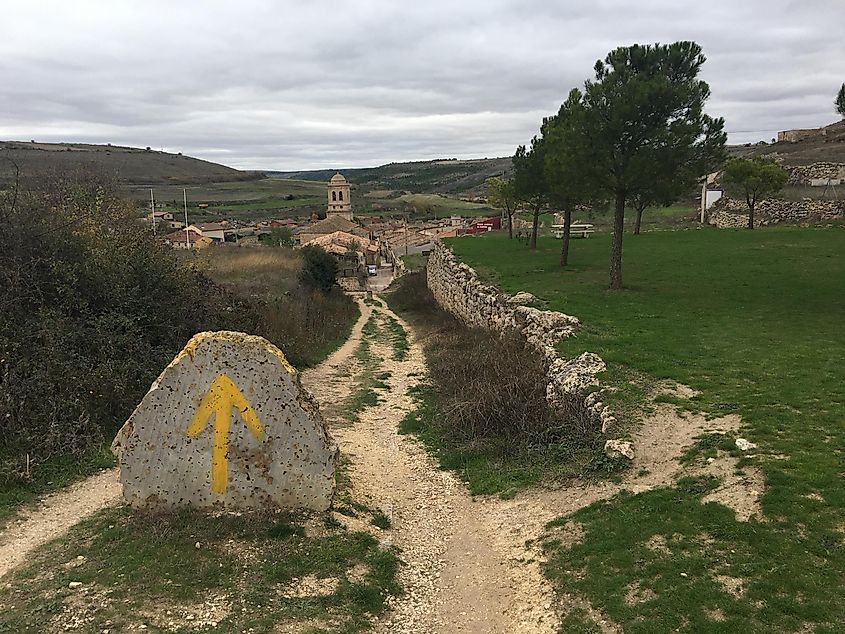
There is also a lot of physical art out there on the Camino, from graffiti, to statues and sculptures, to little art-walk detours that some towns have erected to try and bait pilgrims into visiting. This medium also funnels to the individual level. One evening, I couldn't help but marvel at the exquisite painting one of the older pilgrims was making in the albergue dining area. I was impressed that he was willing to carry the extra gear, and had the energy to work after a long day. I was even more impressed with the quality of his piece. So bring a notepad, or an art set, make voice memos, or like the Tibetan sand mandalas, enjoy watching creative concepts arise, and then disappear into the farmlands forever.
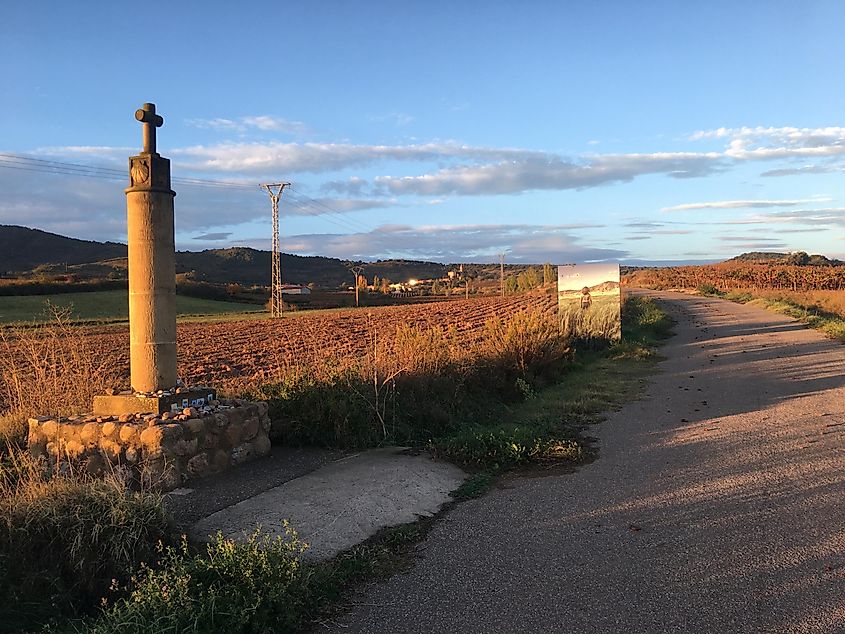

Be prepared to encounter career pilgrims. These may take the form of homeless people that wander from town to town, and from albergue to albergue, or folks who simply cannot get enough of the experience, and continually find ways to embark on the next pilgrimage. And for all the long-haulers you'll meet, there will also be solid representation of day-hikers, weekend-warriors, or "100-kilometer tourists" (i.e. those that walk to Compostela from Sarria – the minimum distance required to get a pilgrim's certificate).
Rise to the Challenge, Or Take the Bus
The long, not so winding road of the Camino Francés' interior can produce conflicting physical outcomes. Ironically, the plateau leads some to achieve new heights, while causing others to drop off. I met pilgrims who struggled to walk 20 kilometers in the first phases of the Camino, only to bang out their first 40-kilometer day by the end of the meseta. Yes, the flats are easier than the mountains, but by this point in the journey, the legs are also learning to adapt to the daily grind, and confidence has grown in tandem. I won't be the first person to notice that so much of what we are able to accomplish physically has to do with the stories we tell ourselves. And during the thick of the Camino, there are a lot of "Yes I can" narratives.
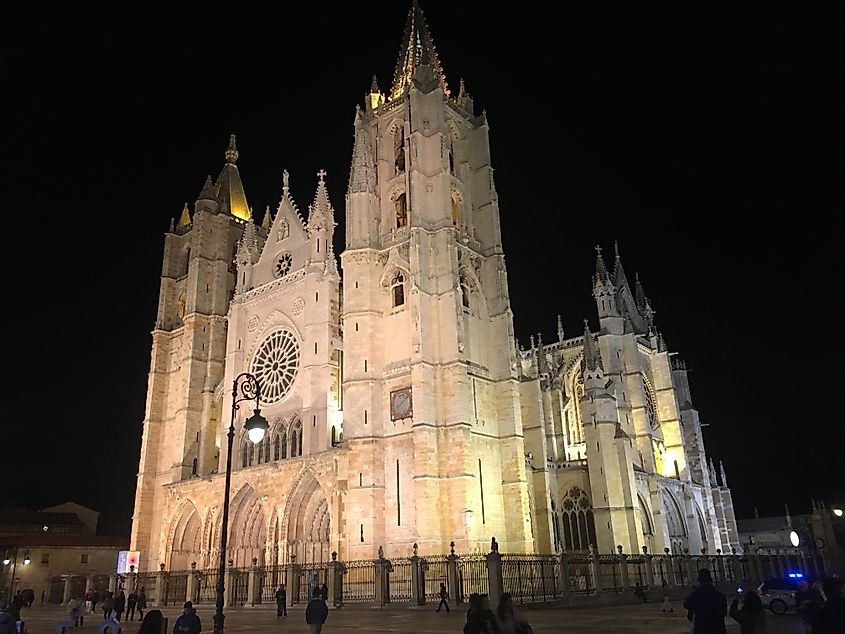
My own example of pilgrimage empowerment began one evening in Sahagún (which is roughly the halfway point of the Camino Francés). One of my newfound friends inquired as to how far I was planning to walk the next day. Given that my knee and shin were cooperating well-enough after my rest in Burgos, I had resumed walking about 40-kilometer days. And when I traced ahead on the map 40 km, I couldn't help but notice that León was only another 15 km beyond that. So the scenario was such that I could either stay in some tiny town (if it was even open – so many were closed by that point in the season), or I could push on, and see the golden cathedral while gorging on tapas and vino. How could I not try for it? At an average walking pace of 5 km/hour, I would simply need to go for another three hours. All of a sudden, I got really excited about the battle. I went to bed extra early, set off at about 6:30 am, ate on the fly, and before I knew it, I crested the hill above the provincial capital. I was so proud of myself. And I loved seeing that same glow in others when they arrived in the albergues after having walked further than they previously thought possible.
Read More: Bom Caminho I: Starting A Walk Across Portugal
But for all the pilgrims that reach new heights during their sojourn, there are equal amounts that lose heart, or physical gusto, and begin to tweak their plans. Some evening gossip began to emerge about which pilgrims were taking the bus through certain sections. I also met a guy who had decided to simply walk the shoulder of the highway, because as he put it, "Deez weh ez shoughta." And, of course, there are those that pull the plug entirely. This may be because of a legitimate injury (sometimes you just have to accept the hand you're dealt), or simply because the experience was not matching their expectation. I don't say any of this to pass judgment. After all, I think it's far better to walk part of the Camino than none. And it's better to take the bus through a section that has no infrastructure, rather than be stranded in the middle of nowhere. There are all imaginable ages and abilities out there, and so everyone has to find their own way. Just be aware of the full range of possibilities, and understand how your pilgrimage may evolve or devolve as it unfolds.
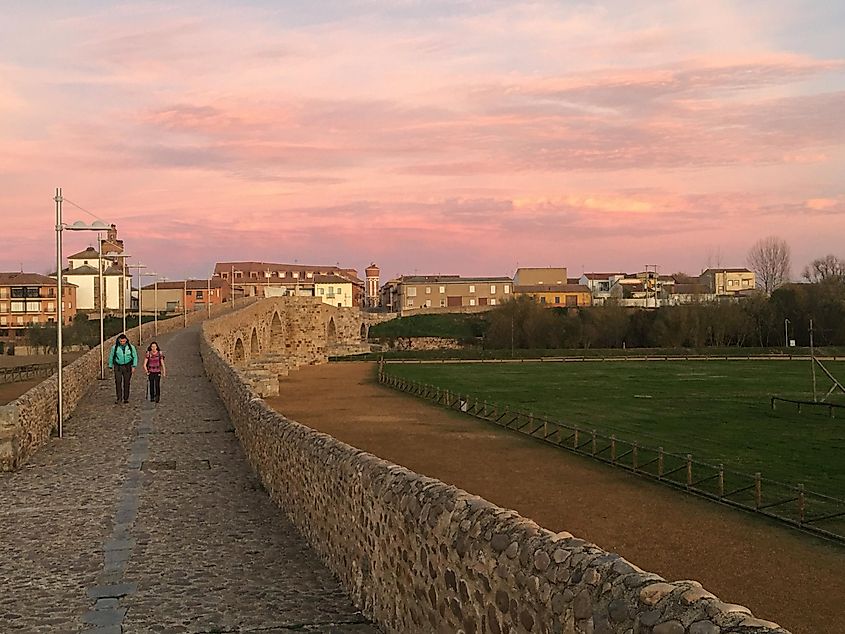
The days spent on the meseta are not the sexiest that the Camino Francés has to offer, but they may end up being some of the most valuable. On paper, this relentlessly monotonous section of Castilla y León may look like something to dread, or even skip entirely, but I recommend including it in your journey. On some level, each pilgrim has a craving for insight, and growth. But to achieve those, the mind needs time to unwind, and the spirit needs to be challenged. The mountains have their own special way of shaking things loose, but there will be plenty of time for that in the first stages out of St.-Jean-Pied-de-Port, France, and upon reaching Galicia. Embrace the plateau. And embrace the people upon it.
Read More: The Camino Francés: Castles, Mountains, and Green Galicia







